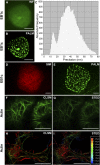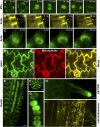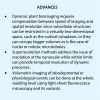Advances in Imaging Plant Cell Dynamics
- PMID: 29167354
- PMCID: PMC5761809
- DOI: 10.1104/pp.17.00962
Advances in Imaging Plant Cell Dynamics
Abstract
Advanced bioimaging uncovers insights into subcellular structures of plants.
Figures








References
Publication types
MeSH terms
LinkOut - more resources
Full Text Sources
Other Literature Sources

